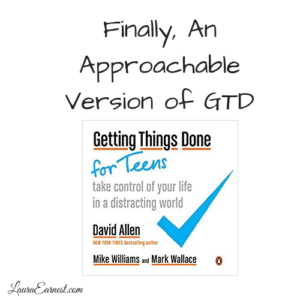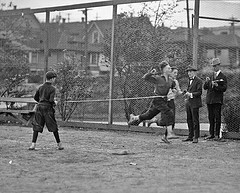
Finally, An Approachable Version of GTD
Earlier this year, David Allen, along with two co-authors, released a new version of Getting Things Done, and this one was aimed at teens. The differences between the original and teen version are striking, and I believe that the teen version is easier to use, maintain, and understand.
If you have ever tried Getting Things Done (GTD), you have probably struggled with parts of it. Whenever I bring up GTD in a management discussion, I hear the grumblings from having to have all the equipment and time to clear the decks, to not knowing what was up in the clouds when the job was stuck on the runway, to just being frustrated with the amount of overhead necessary to keep up the system. All this has been rectified in the version for teens.
Written By An Educator
The reason I even checked this book out was because of an interview that one of the co-authors gave on a podcast I listen to regularly. He used terms like “learning modalities”. This is a term not commonly used outside of the education community. And when I looked at the book, I found that the third author is an educator with 20 years in the public schools. I could see his hands all over the book, making it approachable no matter what learning style an individual favors.
Usuable Out of the Gate
Anyone who has read the original GTD knows that there is a lot of text to wade through before you get to the point where you can do something. And then, when you do get to that point, you instructed to basically take everything around you and put it into a pile and sort through it. This approach is frustrating to people who don’t have the time to do a complete mindsweep, and need some help getting some breathing room.
GTD for Teens breaks the actions down so that they are usable, without massive action. It explains some theories about how the brain works, goes through real-life examples of how to classify “stuff”, and then you’re on your way.
No 5-10 Year Plan
One of the things I hated about the original GTD book was the emphasis on knowing where you are going to be in 5-10 years. I work in technology, and I have no desire to ever be a manager again. I can’t even fathom what technology might be out there in three years for me to work with, much less what I will be doing in 10! The whole runway analogy just irked me. With the job I do, I would never get past 500 feet. Why fly at all?
In GTD for Teens, they approach this using a pyramid, with the top being “why am I on the planet?”…and then instructions to write down what “seems true to you today.” Instead of setting that level and working toward it, it works from the vague to the specific, without pressuring anyone to lock their thinking and focus onto a level you might not even want in a few years.
Contexts Are Gone
I suspected when I read GTD in 2002, that contexts weren’t really as important as David Allen made them out to be. Again, I worked in technology, and I could see where technology could be used to blur those lines, making it impossible to have clear-cut divisions between work/personal, business phones, email and such.
In GTD for Teens, they convert this to a “spotlight strategy” which talks about the four spotlights: location, time, energy and priority. This is much more flexible than the contexts of old. It allows you to take into account how you would be most effective at the time, rather than making you slog through a list of tasks just because you happened to be in a certain physical location.
The Lab
One of the key concepts in education is you present the material, and then you get the students to engage with it. In my classroom, that meant doing math problems, practicing the skills. This book follows the same patterns: present it, then have them work with it.
GTD for Teens uses the back third of the book as a lab. The sole purpose is to have teens walk through the concepts for themselves. It’s written very much like a science lab manual, explaining why you’re doing it, what to do, and what to look for.
Something You Can Do Right Now
If you have any familiarity with GTD (the original), head over to GTDForTeens.com and look for their download icon. Choose one of the worksheets and try it out. I love the mindsweep for stress.
If you aren’t familiar with GTD, skip the original book and head to the library (or Amazon*) and pick up a copy of Getting Things Done for Teens. It will really help you clarify and systematize your productivity systems.
Book Information
Book: Getting Things Done For Teens*
Author: David Allen, Mike Williams, Mark Wallace
Publisher: Penguin Books
ISBN-13: 978-0143131939
Reading Time: 4 hours




